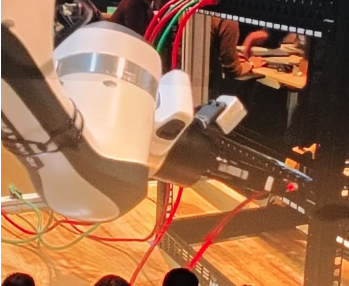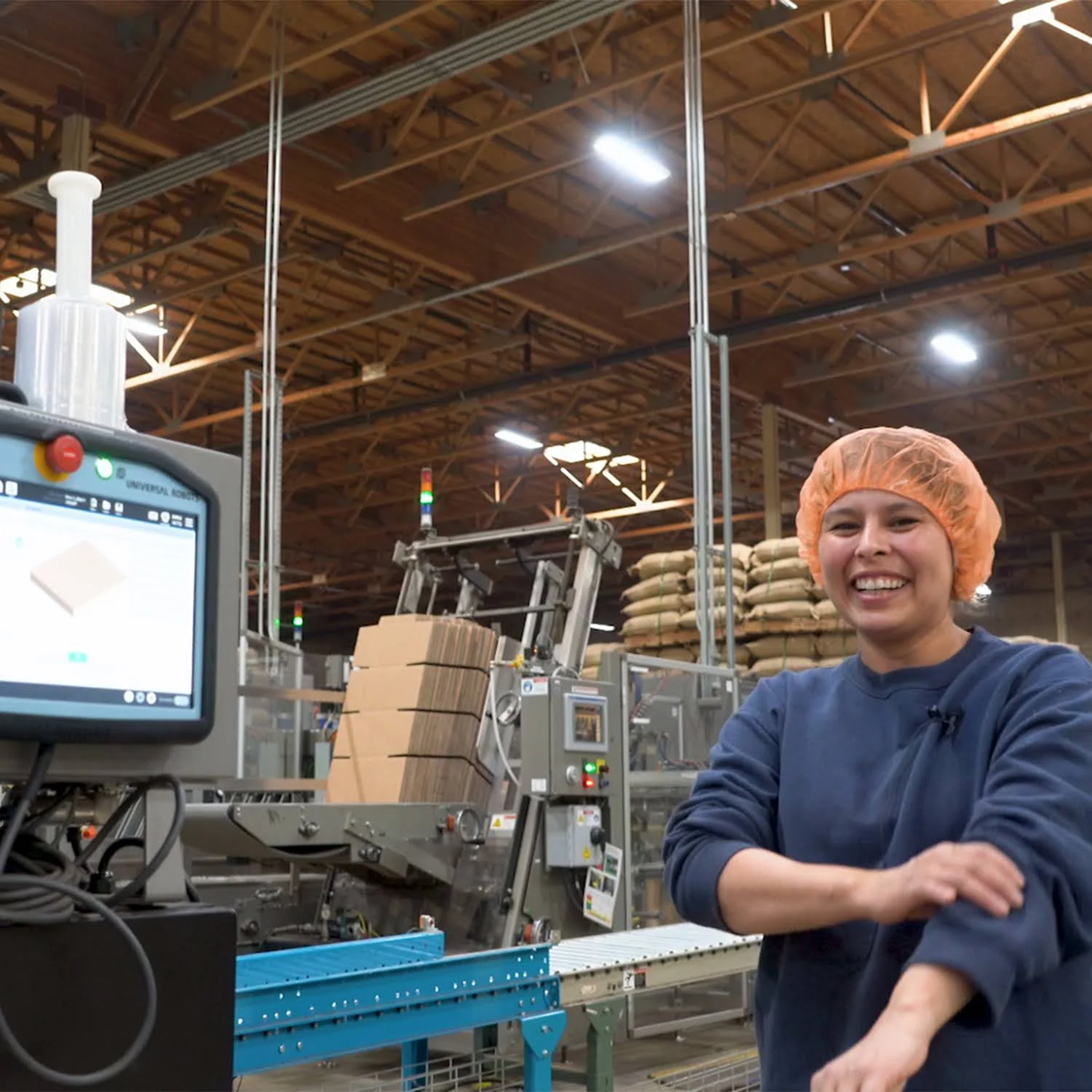6 Steps to Optimize a Palletizing Cell With Dual Grippers

Posted on Jul 11, 2017 in Palletizing
7 min read time
How can you optimize your robot cell? Here's how dual grippers can shave off 39% of the cycle time of a palletizing application.
Palletizing is a perfect application for dual grippers. However, you should aim to quantify the performance improvement of a second gripper to ensure that the investment makes sense. This article shows how to calculate the time that a dual gripper could shave off your palletizing process.
Why Palletizing is a Perfect Task for Dual Grippers
Most of the time spent during a palletizing task is spent travelling. This means that a dual gripper can significantly reduce the cycle time simply because it is able to hold two objects at once.
It is also a very easy application to program. Over on DoF, Tyler Martin explained how he was able to use the palletizing wizard to program a dual gripper setup.
6 Steps to Optimize a Palletizing Cell With Dual Grippers
We'll use Tyler's application as an example case. Here's a video of it:
Follow the following six steps to calculate the improvement caused by dual grippers in your own palletizing cell.
1. Set Up the Cell With One Gripper
First set up the cell using one gripper only. If you have already attached a dual gripper to the robot there is no need to remove the extra gripper. Just program the setup using one gripper (technically, the weight of the second gripper may affect the time, but it's usually negligible).
2. List Important Times in the Process
On paper, work through the palletizing process. Do this before you program the robot (if it isn't programmed already) to save time. Write out a single pick-place sequence on paper, to ensure that you have accounted for all the important times.
Using our example, one sequence will go:
Wait -> Pick -> Move -> Place -> Move
Here are the important times in this task:
- Tpi — Pick up time with one gripper
- Ttt — Travel time between pick and place locations.
- Tpl — Place time with one gripper
- Tw — Wait time for the object to appear at pick location (this may not be necessary for your application)
Then write your sequence as an equation and simplify. In our case it will look like this:
3. Measure the Times
Now get out your stopwatch and measure the times of each stage in your process. You can also log times using the robot code but it is still a good idea to measure using a stopwatch for external verification. Make sure that the stopwatch has a "lap" timer, as there won't be time to stop, write down and restart the stopwatch while the robot is running.
Let the robot go through the sequence several times, the more the better. If your pallet is small (i.e each pallet takes less than five minutes to fill) then go through the whole process. Otherwise just get as many cycles as you can.
Once you have logged the times, take the average time using the mean (add up the times for each value and divide by the number of values).
Here are the rough average times I calculated using the example video:
- Pick up time (Tpi) = 3.7 seconds
- Travel time (Ttt) = 4.6 seconds
- Place time (Tpl) = 3.9 seconds
- Wait time (Tw) = 6 seconds
3. Calculate the Cycle Time for One Gripper
Using these values you can now calculate the total cycle time. However, you need one more value before you can do this:
- Number of items on one pallet (Ni) = 30
Now multiply your equation by this value to get the total cycle time to load one pallet (Tt).
The equation for our example is now:
Plugging in the numbers we get:
This is gives a total cycle time of 11.4 minutes. If the dual gripper setup improves upon this, it could be a worthwhile investment. However, if it decreases performance then it might not be a good idea.
4. Introduce the Dual Gripper
You can now introduce the dual gripper to the setup. As before, write out the new sequence on paper. Our example sequence now looks like this:
Wait -> Pick with Gripper 1 -> Switch Grippers -> Pick with Gripper 2 -> Move
-> Place with Gripper 1 -> Switch Grippers -> Place with Gripper 2-> Move
We now need to know the following time:
- Ts — The time taken to switch between grippers.
Our sequence can now be represented in the equation:
(Note that, in the video, the cobot is supplied by a gantry robot. In order to simplify this example, I have assumed that it was modified to hold two objects after the dual gripper was added. If it was able to hold two objects in the single gripper case, the wait time for the single gripper case should have been applied only for every other pick.)
Run the palletizing task again, measuring the times for each step in the sequence. For our example, the average time to switch between grippers was calculated as:
- Ts = 1.4 seconds
5. Calculate the Time Improvement
You can now calculate the new total cycle time. Instead of multiplying by Ni (the number of items in a pallet), you will now multiply by Ni/2 as two objects are held simultaneously by the robot.
For our example, the equation for total cycle time is now:
This leads to a time of:
You can now calculate the time improvement using the equation
For our example, this leads to an improvement of:
This means that you save 3.1 minutes per pallet! That's equivalent to a whole extra pallet for every three pallets you fill.
6. Optimize Further
An improvement of 27% is impressive. Are there any ways you could knock even more time off your palletizing process?
You can see in the video that Tyler's application actually takes less time than the one I have just described. Instead of placing each object individually into the box, the robot drops them both at once.
Let's see how this improvement affects the total cycle time.
By removing one Ts and one Tpl, the equation is now:
This leads to a total cycle time of:
That's a further saving of 1.3 minutes per pallet by simply placing two items at once, an improvement of 16%. The dual gripper setup now runs 39% faster than the single gripper setup!
Always look out for ways you could shave a few seconds off a task. It could lead to huge improvements overall.
How else could you knock some time off this process?
Find out more about our palletizing solution on our product page.
Any questions or comments about these calculations? Tell us in the comments below or join the discussion on LinkedIn, Twitter, Facebook or the DoF professional robotics community.


















Leave a comment